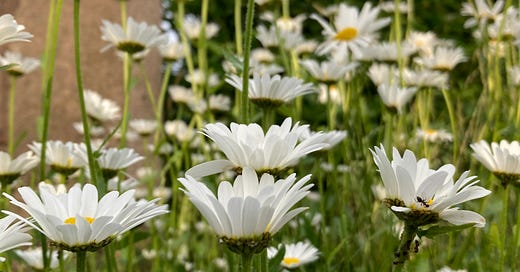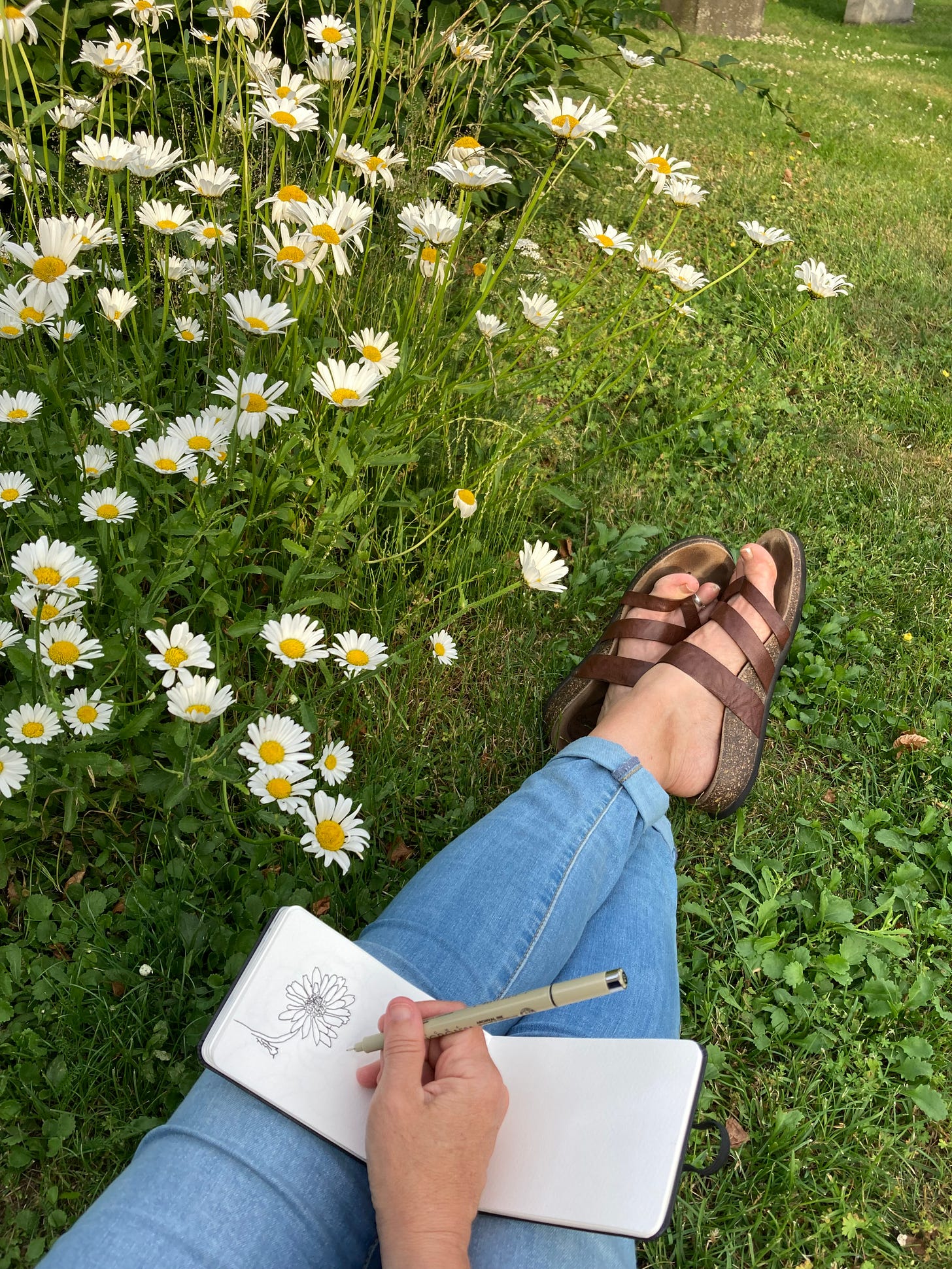An Art Teacher’s Guide To Getting Back To nature
"To practice any art, no matter how well or badly, is a way to make your soul grow. So do it.” - Kurt Vonnegut
It can be easy to think of nature as out-there and not-here, somewhere far off and distant from us. Something you have to venture forth to find. But nature doesn’t have to be all Grand Canyon and ancient forests. Nature in truth is all around us, we need only stand still a moment and witness.
Nature is both the grandest rocky sea coast and the little dandelion poking up through a crack in the pavement. We would like our Nature to be Instagram-ready, untouched and pure, but I hate to tell you this…it never is. A garden is planted by people but definitely nature in action. That little dandelion is a bothersome weed to some but it’s a perfect example of nature adapting to our city’s leftover spaces. Everyday my children tumble out of school to play in the grassy green and tree-filled park across the street that also happens to be a graveyard. And that, my friends, is nature too. So finding nature can be just as much about finding the right mindset as it is the right physical place. Nature is everywhere!
Appreciating nature is first and foremost about standing still and seeking it out. My favorite way to visit with the nature around me is to make a little sketch of what I can see. Committing pen to paper helps me slow down and really pay attention to what’s right here, right now.
So perhaps you’d like to try this too? Let’s give it a go. Grab something to write on and something to write with. I carry a little sketchbook but you could use an index card or any old piece of paper. A pencil is perfectly fine, a pen works too. Keep the supplies for your first outing simple, comfortable.
Step one. Go outside. It doesn’t have to be anyplace special. Look for something green and go that way. The rest of the rainbow is lovely too. (And frankly, the little brown bird bouncing in front of me as I write this seems to be begging for a cameo.) Whatever calls your attention and draws you in. And of course, sometimes we can’t get outside, but don’t let that stop you. Crack open the window, smell the fresh air, and look out there.
Step two. Stop and look. Usually down. Sometimes up. The best bits are not likely to be found at eye level. Find something that grows and get close to it. Observe it as up-close as you can, like ten centimeters close if you can. Don’t rush. This is not a race. Let your eyes linger. Take a couple deep breaths while you’re there. I like to hold smaller objects like flowers, pinecones, or twigs in my hand but sometimes that’s not possible. (Please resist the temptation to steal flowers from your neighbor’s garden!) We usually think of nature as vast and awe inspiring but try here to think little – it’s much less intimidating that way.
Step three. Draw something. Don’t overthink it, just begin. I like to do a type of drawing called “blind contour” where you allow yourself to focus very closely on the thing you’re looking at and not the drawing. Allow your eyes to carefully follow the edges and lines in what you are looking at, put your pen point on the paper and let it follow along with the movement of your eyes on the paper. Imagine they are in sync, moving the same direction and at the same speed. Drawing this way makes you slow down… sometimes I have to remember to breathe. After a minute or so pick up your pen and see what you’ve got. Maybe it looks like something, maybe not. Maybe it’s just a little scribble on the page. Whatever you’ve done is absolutely fine. It’s not about the drawing so much as the seeing.
Step four. Keep going. You can jump back in to the same drawing, or you can start again at a different spot on the page. You can look at the same little treasure, you can look at it from a different angle, or you can look at a different part of it, just keep going. Try again. Stay curious.
Eventually you’ll tire of such focus. Or the page will fill up, or something else will demand your attention. If it takes five minutes or fifteen or fifty, it’s all good.
There is no pressure in this exploration. Whatever you draw doesn’t have to be beautiful and it doesn’t even have to make sense. It is the act of drawing that matters. It is what allows you to notice some little part of the natural world and get to know it in a new way, more completely, and to appreciate its complexity and variety. The whorl of a snail’s shell, the tiny stamens deep inside the rose, the arrangement of spots on the ladybug are all surprisingly intricate upon closer inspection.
Usually when I am back indoors I like to add a little color. Maybe I took a photo or maybe it’s just from memory but a hint of watercolor or marker always adds dimension and life. I also like that it makes me go back and consider my drawing later. It’s nice to take a moment to appreciate the time I spent outside in communion with mysteries I do not yet understand.







